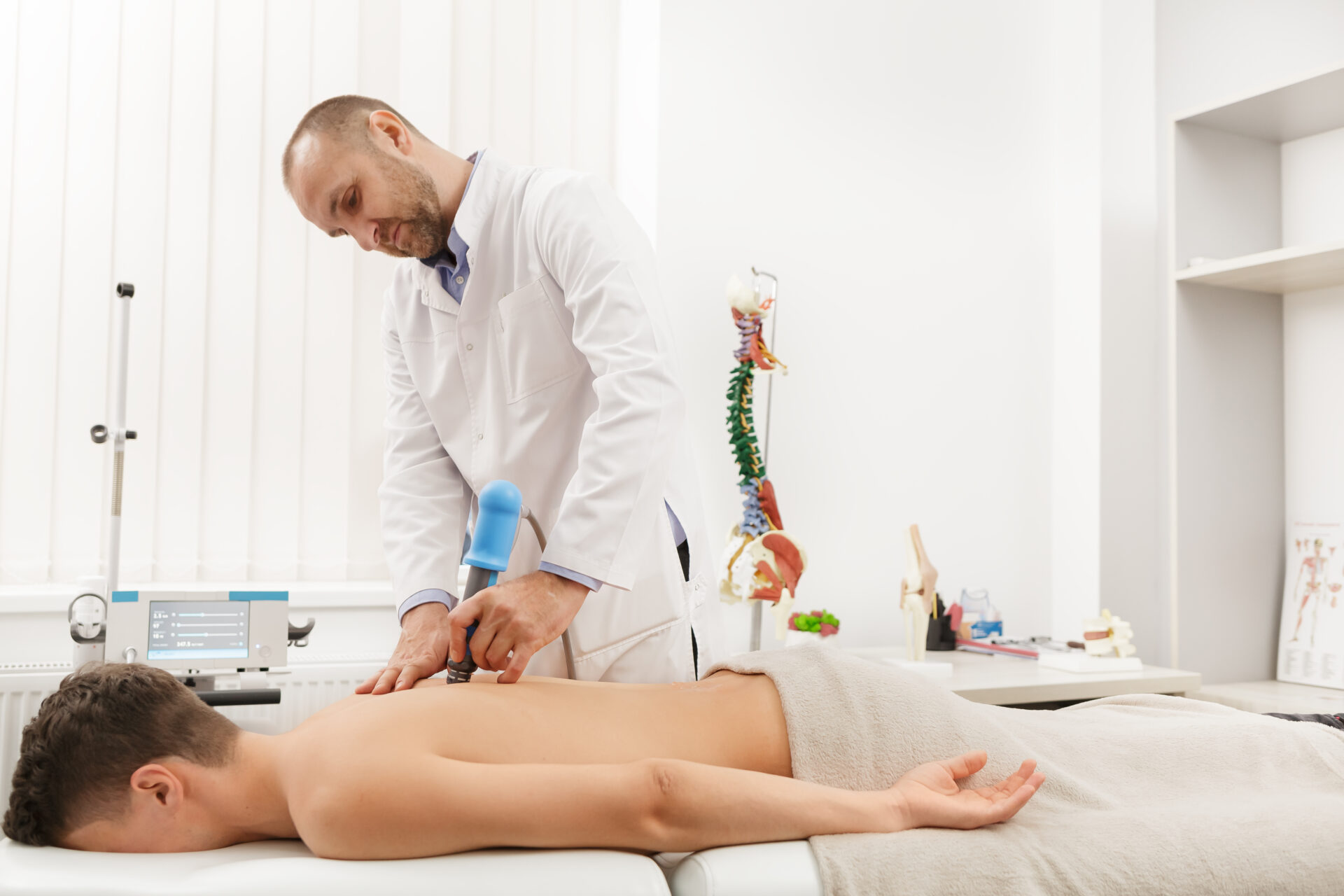FOCAL vs. RADIAL SHOCKWAVE: WHICH ONE WORKS BEST FOR PAIN & INJURY?
A complete guide for patients deciding between two very different technologies.
Shockwave therapy is one of the most effective treatments for chronic pain, tendon injuries, and long-standing musculoskeletal dysfunction.
But not all shockwave systems are the same.
In fact, focal shockwave and radial shockwave function completely differently inside the body — and choosing the wrong one may limit your results.
At Divergent Healthcare, we provide both technologies, including true focal shockwave (the only clinic in Alberta offering this level of medical-grade depth and precision). As part of our multi-modality shockwave treatments. it’s important that patients understand the difference.
WHAT IS RADIAL SHOCKWAVE?
Radial shockwave is the most common version found in clinics. It generates pressure waves that disperse outward from the applicator head, treating superficial tissues such as:
-
muscle bellies
-
broad fascial tissues
-
superficial tendons
-
IT band
-
chronic soft-tissue tension
It is excellent for large surface areas, tight muscles, or widespread restriction.
Best uses for radial shockwave:
-
IT band tightness
-
Plantar fasciitis (early to moderate)
-
Trigger points
-
Lateral epicondylitis
-
Chronic muscle tension
-
Myofascial adhesions
However, radial shockwave cannot reach deep tissues and does not deliver the same level of targeted, regenerative force as focal shockwave.
WHAT IS FOCAL SHOCKWAVE?
Focal shockwave (also called focused extracorporeal shockwave therapy) is a high-energy, high-precision medical technology used to treat deep tissue pathology.
Unlike radial, focal shockwave penetrates much deeper and delivers a precise, concentrated energy point directly into the dysfunctional tissue.
This makes it uniquely effective for:
-
tendon degeneration
-
chronic tendinopathy
-
calcifications
-
deep adhesions
-
scar tissue
-
bone-tendon junction injuries
-
advanced plantar fasciitis
-
rotator cuff pathology
-
gluteal tendinopathy
-
hip pain related to deep fibrosis
-
long-standing injuries
At Divergent Healthcare, focal shockwave is a critical component of our advanced shockwave programs bcause it generates the disruptive physiological stimulus required to soften scar tissue, break down calcium buildup, and restart biological healing.
FOCAL vs. RADIAL — KEY DIFFERENCES
|
Feature |
Radial Shockwave |
Focal Shockwave |
|---|---|---|
|
Depth |
1–3 cm |
Up to 12 cm |
|
Energy type |
Pressure wave |
Focused shockwave |
|
Best for |
Muscle & fascia |
Deep tendon & bone |
|
Precision |
Low |
Very high |
|
Effectiveness for chronic degeneration |
Moderate |
Very strong |
|
Cost |
Lower |
Higher (medical-grade) |
WHICH ONE DO YOU NEED?
If your condition is superficial muscle or fascia related, radial may be enough.
If your condition involves tendons, chronic degeneration, or deep scar tissue, focal shockwave is almost always superior.
Most of our patients with long-standing injury do best with a combined multi-modality protocol, which includes:
-
Focal shockwave
-
Radial shockwave
-
Class IV laser
-
Super Inductive System (SIS)
-
Soft tissue mobilization
-
Radiofrequency
-
Rehab / loading progression
WHY DIVERGENT HEALTHCARE IS DIFFERENT
We are the only clinic in Alberta with true focal shockwave at the medical level required for deep structural repair.
We also pair shockwave with advanced technologies and one-on-one clinical care — a major advantage over clinics that rely on a single machine or generic, low-intensity protocols.
CONDITIONS THAT RESPOND BEST TO FOCAL SHOCKWAVE
Excellent response:
-
Plantar fasciitis (moderate–severe)
-
Achilles tendinopathy
-
Patellar tendinopathy
-
Rotator cuff tendinosis
-
Frozen shoulder (adhesive capsulitis)
-
Gluteal tendinopathy
-
Trochanteric bursitis
-
Hamstring tendinopathy
-
Elbow tendon injuries
-
Chronic scar tissue and fibrosis
Good response:
-
Muscle injuries with deeper involvement
-
Post-surgical fibrosis
-
Persistent biomechanical compensation injuries
CONDITIONS THAT RESPOND BEST TO RADIAL SHOCKWAVE
Excellent response:
-
Tight calves
-
IT band tightness
-
Quadriceps tension
-
Chronic forearm tightness
-
Trigger points
-
Fascial restrictions
Good response:
-
Mild tendinopathies
-
Generalized muscle pain
-
Wide treatment areas
WHY WE ALWAYS USE A MULTIMODAL APPROACH
Using only radial or only focal shockwave is rarely ideal.
Chronic injuries involve:
-
fibrosis
-
adhesion
-
reduced circulation
-
dysfunctional muscle recruitment
-
tendon thickening
-
nerve irritation
-
mechanical overload
Each technology plays a specific role.
This is why our multi-modality protocols are described in detail on our Shockwave Therapy Calgary page
IS SHOCKWAVE PAINFUL?
This depends on:
-
how chronic the injury is
-
how much scar tissue is present
-
how deep the pathology is
-
how inflamed the area is
HOW MANY SESSIONS WILL YOU NEED?
Most patients require:
-
4–8 sessions for moderate conditions
-
8–12+ sessions for chronic degenerative injuries
Chronic conditions need enough disruptive stimulation to change tissue physiology — something focal shockwave is specifically designed for.
READY TO START YOUR TREATMENT?
If you’re unsure which shockwave therapy is right for you, we can determine that during your medical-directed assessment.
Book your visit here:
👉 Book Your Shockwave Consultation

